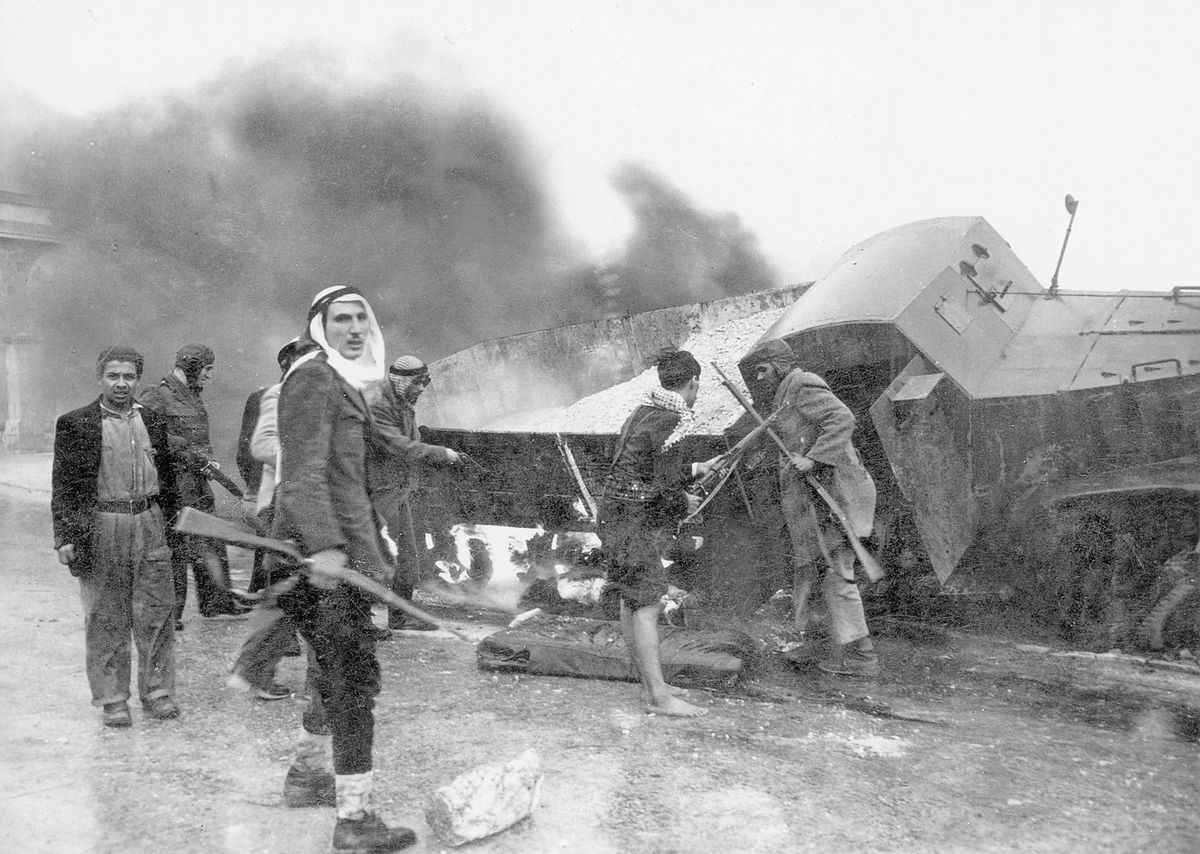
Civil War in Mandatory Palestine
PalestineThe adoption of the UN General Assembly's partition plan in November 1947 was met with jubilation in the Jewish community and indignation in the Arab community, leading to an escalation of violence and a civil war in Palestine. By January 1948, the conflict had militarized significantly, with the intervention of Arab Liberation Army regiments and the blockade of Jerusalem's 100,000 Jewish residents, led by Abd al-Qadir al-Husayni.[177] The Jewish community, particularly the Haganah, struggled to break the blockade, losing many lives and armored vehicles in the process.[178]
As the violence intensified, up to 100,000 Arabs from urban areas like Haifa, Jaffa, and Jerusalem, as well as areas with Jewish majorities, fled abroad or to other Arab regions.[179] The United States, initially supportive of the partition, withdrew its backing, influencing the Arab League's perception that the Palestinian Arabs, bolstered by the Arab Liberation Army, could thwart the partition plan. Meanwhile, the British government shifted its position to support the annexation of the Arab part of Palestine by Transjordan, a plan formalized on 7 February 1948.[180]
David Ben-Gurion, leader of the Jewish community, responded by reorganizing the Haganah and implementing mandatory conscription. Funds raised by Golda Meir in the United States, along with support from the Soviet Union, allowed the Jewish community to acquire significant arms from Eastern Europe. Ben-Gurion tasked Yigael Yadin with planning for the expected intervention of Arab states, leading to the development of Plan Dalet. This strategy transitioned the Haganah from defense to offense, aiming to establish Jewish territorial continuity. The plan led to the capture of key cities and the flight of over 250,000 Palestinian Arabs, setting the stage for the intervention of Arab states.[181]
On 14 May 1948, coinciding with the final British withdrawal from Haifa, the Jewish People's Council declared the establishment of the State of Israel at the Tel Aviv Museum.[182] This declaration marked the culmination of Zionist efforts and the beginning of a new phase in the Israeli-Arab conflict.
